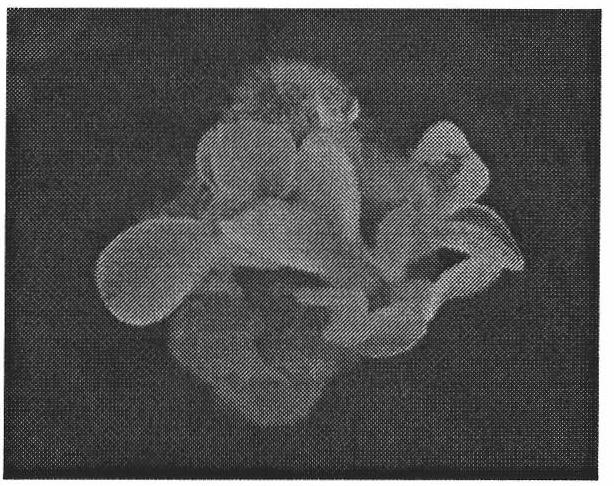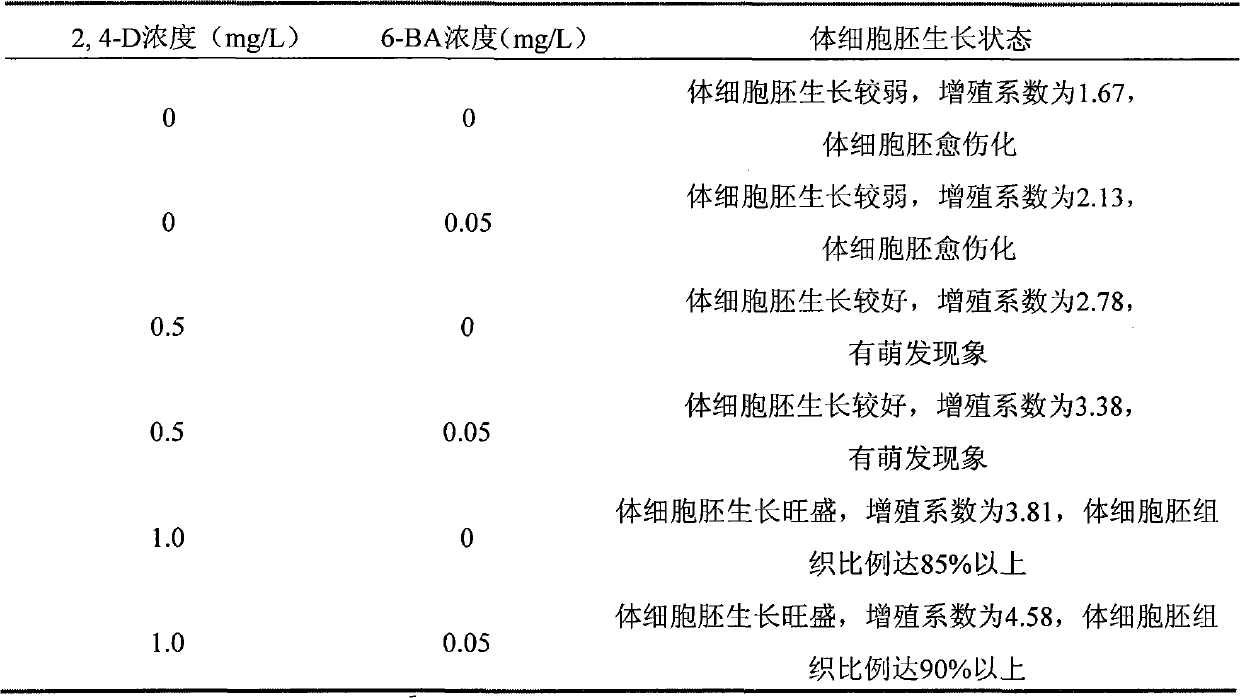Method for regenerating plants of Chinese rose by using leaves as explants
A technology of explants and plants, applied in the direction of plant regeneration, botany equipment and methods, horticultural methods, etc., to achieve good multiplication effect
- Summary
- Abstract
- Description
- Claims
- Application Information
AI Technical Summary
Problems solved by technology
Method used
Image
Examples
Embodiment 1
[0033] Test material selection, medium design and inoculation culture
[0034] 1. The source and treatment of test materials:
[0035] The test material among the present invention is selected from the unexpanded leaves of Chinese rose 'Samansa', collected from the flower test base of Huazhong Agricultural University in Wuhan City, Hubei Province, and adopts the unexpanded leaves of the excellent Chinese rose 'Samansa' without damage by diseases and insect pests. Compound leaves. The original source of this variety is a public sale variety purchased from the Hubei Provincial Flower and Seedling Market on Xiongchu Street, Wuchang, Wuhan City, Hubei Province. The unexpanded compound leaves of rose 'Samansha' collected in the field were sterilized by conventional methods (Gao Liping. Establishment of plant regeneration system of rose variety 'Samansha' and research on genetic transformation mediated by Agrobacterium tumefaciens. [Ph.D. Dissertation ].Wuhan: Huazhong Agricultura...
Embodiment 2
[0050] Effects of Different Concentrations of 2,4-D on Somatic Embryogenesis of Rose 'Samansha'
[0051] In plant tissue culture, 2,4-D is a widely used auxin growth regulator, and it is recognized as the most effective auxin for initiating cell dedifferentiation, forming callus or organogenesis . The experimental results of different concentrations of 2,4-D on the somatic embryogenesis of rose 'Samansha' are shown in Table 2: when the concentration of 2,4-D is 0-2 mg / L, the petiole of the leaflet expands, and at Browning and death during the continuous culture; when the concentration of 2,4-D was 3mg / L and 4mg / L, somatic embryogenesis occurred at the petiole of the leaflet; when the concentration of 2,4-D was 5-8mg / L, The small leaves have adventitious roots. Therefore, 3mg / L 2,4-D is the optimal hormone concentration for the induction of somatic embryos in rose 'Samansha'.
[0052] Table 2 Effects of different concentrations of 2,4-D on somatic embryogenesis of rose 'Sama...
Embodiment 3
[0055] Effects of different concentration combinations of 2, 4-D and 6-BA on the growth of somatic embryos in rose 'Samansha'
[0056] Somatic embryos were inoculated on MS medium containing different concentrations of 2,4-D (0, 0.5, 1.0 mg / L) and 6-6-BA (0, 0.05 mg / L), and the glucose concentration was 60 g / L , the plant gel is 2.5g / L. Cultivate under light conditions. After 4 weeks, the effects of exogenous hormones on the growth status of somatic embryos were compared. The results are shown in Table 3: when the concentration of 2,4-D was too low, the growth potential of the somatic embryos was weak, the proliferation was slow and the callus was serious. Somatic embryos grow best on the medium containing 1.0mg / L 2,4-D, 0.05mg / L 6-BA, somatic embryos grow vigorously, proliferate obviously and rapidly, and the proportion of somatic embryo tissue reaches 90% Therefore, it is suitable for the proliferation and preservation of rose somatic embryos.
[0057] Table 3 Effects of...
PUM
 Login to View More
Login to View More Abstract
Description
Claims
Application Information
 Login to View More
Login to View More - R&D
- Intellectual Property
- Life Sciences
- Materials
- Tech Scout
- Unparalleled Data Quality
- Higher Quality Content
- 60% Fewer Hallucinations
Browse by: Latest US Patents, China's latest patents, Technical Efficacy Thesaurus, Application Domain, Technology Topic, Popular Technical Reports.
© 2025 PatSnap. All rights reserved.Legal|Privacy policy|Modern Slavery Act Transparency Statement|Sitemap|About US| Contact US: help@patsnap.com



